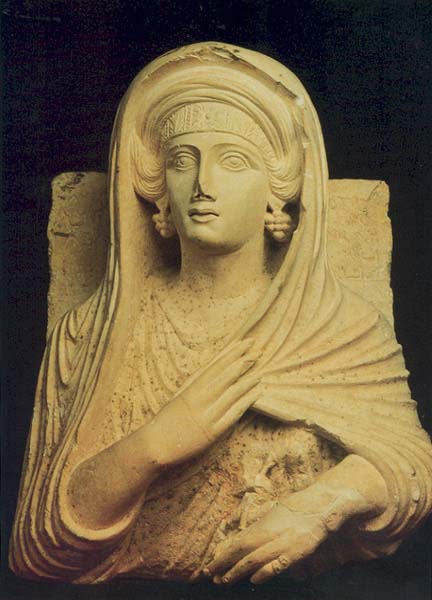Image Details

Lorenzo de Masi/Sites
An elegant matron pulls her shawl close, as if to ward off the chill of death, in this second-century A.D. funerary relief from Palmyra. Located on the trade route linking Syria with Mesopotamia, Palmyra was an important caravan stop and market town from the second millennium B.C. until its destruction in 273 A.D. by the Roman emperor Aurelian (270–275 A.D.).
The inscriptions in Palmyrene script, a branch of Old Aramaic, visible above each shoulder of the limestone sculpture identify her as Aqmat, daughter of Hairan, son of Bonnur, and as the mother of Nebozabad, son of Barikai.
